
IN THIS ISSUE NATIONAL TRUST NEW SOUTH WALES PROTECTING HARPER’S MANSION AND GARDENS PORTIA GEACH MEMORIAL AWARD TURNS 60 AUSTRALIAN HERITAGE FESTIVAL RETURNS APRIL – SEPTEMBER 2024
It’s often said that Harper’s Mansion in the Southern Highlands town of Berrima has three main attractions: the charming Georgian architecture of the house, the stunning garden with its large hedge maze and the dedication of the volunteers who care tirelessly for the property. Now, we need your help to raise $230,000 to make Harper’s Mansion sustainable for the future. Find out more and get involved on page 6.
The Australian Heritage Festival is just around the corner and you’ll find the action-packed calendar on page 16. With events running across the State, there’s something for everyone, from inner-city walking tours to art exhibitions, expert talks and much more. We hope to see you there!

On the cover: Sitting on two acres of land and dotted with fruit trees, heritage roses and camellias, the gardens at Harper’s Mansion in Berrima are the focus of our current fundraising appeal (photography by Michael Kennedy).
National Trust (NSW)
Observatory Hill, Millers Point, Sydney 2000
GPO Box 518, Sydney 2001
Telephone: (02) 9258 0123 nationaltrust.org.au/nsw
President: Kathryn Pitkin AM
CEO: Debbie Mills
Editor: Michelle Bateman
Designer: Lauren Sutherland
Editorial Committee: David Burdon, Nick Corbett, Nicole Crabb, Susan Hunt, Debbie Mills, Lisa Siberry, Anja Stride, Leah Tasker, Jane Watters, Anne Weinman.
The National Trust New South Wales
CONTENTS Inside Vision 3 Kathryn Pitkin AM and Debbie Mills Update 4 National Trust News Conserve 6 Protecting History at Harper’s Mansion Explore 10 Historic Braidwood – A Town of Living Heritage Reflect 12 Art and Activism in the Life of Portia Geach Protect 14 Understanding New Challenges for Historic Gardens Calendar 16 April to September 2024 Shop 22 What’s in Store for Winter Member Moments 23 A Day to Remember
published
the
(New
Published articles reflect the opinions of the authors and are not necessarily reflective of the views of the National Trust. This magazine is printed by Enviropress, a division of Bright Print Group, on paper that is independently certified by the Forest Stewardship Council (FSC), carbon neutral and made with 100% recycled postconsumer waste in a chlorine-free environment.
magazine is
by
National Trust of Australia
South Wales).
National Trust (NSW) 2
Striking the right balance
BY KATHRYN PITKIN AM AND DEBBIE MILLS
Dear Members,
Heritage and the housing crisis have been hotly debated over the past year. As NSW navigates the challenges around housing shortages and bullish housing targets, the National Trust has proactively called for heritage to be part of the solution.
We’re advocating that heritage can and does exist harmoniously in some of Australia’s most densely populated suburbs. In the past, Sydney has shown that it’s possible to retain many areas defined by its housing. Indeed, suburbs such as Elizabeth Bay, Chippendale, Ultimo, Potts Point, Darlinghurst, Woolloomooloo and Newtown are all densely populated heritage conservation areas.
There is an absolute need to address housing shortages, however the debate must return to the actual issue: planning. We’re calling for sensible and sensitive planning as the way forward, rather than knocking down large conservation areas surrounding transport hubs.

Places adapt over time and so should our housing. Adaptive reuse presents a sustainable option. Adapted heritage buildings could increase housing supply, while maintaining a suburb’s value and reducing its carbon footprint. Likewise, better use of vacant properties is an excellent solution to address the housing crisis. With more than 160,000 unoccupied dwellings in Greater Sydney alone, utilising just a proportion of these buildings would make a significant difference to the housing supply.
With NSW looking likely to fall short of its housing targets, heritage must be part of the solution. We’ll continue to give heritage a voice as this debate continues throughout the year.
On an exciting note, we’re delighted to welcome Alison Page to the National Trust (NSW) Board. Alison is a descendant of the Dharawal and Yuin people and an award-winning designer and film producer. She is currently Associate Dean (Indigenous Leadership and Engagement) at UTS Faculty of Design, Architecture & Building, and a member of several cultural boards and committees including the National Australia Day Council, Sydney Harbour Federation Trust and the National Museum of Australia’s Indigenous Reference Group. The founder of the National Aboriginal Design Agency, Alison was inducted into the Design Institute of Australia Hall of Fame in 2015 and in 2022, was the Interior Design Excellence Awards Gold Medal winner. Alison was a panellist on the ABC television program The New Inventors and has previously served on numerous boards. Welcome, Alison.
To our members, thank you for your ongoing support and we hope you enjoy the current edition of the magazine.
Best wishes,


FOLLOW US ON FACEBOOK
Stay up to date with what’s on by following @nationaltrustau or by searching for your favourite National Trust (NSW) place on Facebook. Don’t forget to share photographs from your visit using the hashtag #NationalTrustNSW
VISION
Kathryn Pitkin AM, President
Debbie Mills, CEO
3 April – September 2024
National Trust News
Keep up to date with the latest heritage and advocacy news from across the State. Read all about the new education programs at Old Government House, Ultimo Powerhouse Museum and the latest ways to get even more from your membership.
GENERAL NEWS
Bringing history to life for schools
Old Government House has launched three new education programs for NSW primary students. With a focus on local Dharug voices, caring for Country and the effects of colonisation, the programs are designed to meet the latest primary school curriculum outcomes and offer a hands-on learning experience. Uncle Lex Dadd shares artefacts such as the Coolamon and digging stick in the refreshed Dharug room, helping students explore Parramatta’s rich ecological history. Find out more at nationaltrust.org.au/education-nsw
Enjoy free and exclusive member events
Did you know we run free and exclusive events for National Trust members throughout the year? Standout events this year include special guided tours of exhibitions at the S.H. Ervin Gallery and Old Government House, followed by light refreshments and the chance to meet other National Trust members. Make the most of your membership and join us at upcoming events. Turn to page 19 for details, or visit nationaltrust.org.au/whats-on-nsw and click on National Trust (NSW) Member Events.
Restoration begins at Cooma Cottage
With your help, we’ve begun planning the restoration of historic Cooma Cottage in Yass – thank you to everyone who donated to our appeal. The property has been inspected by conservation specialists and a full scope of works is in preparation. The project will see significant improvements undertaken to the exterior of the house and a major re-presentation and interpretation of the historic interiors – all in time for the bicentenary celebrations of Hume and Hovell’s 1824 expedition. Works will be completed by December 2024.


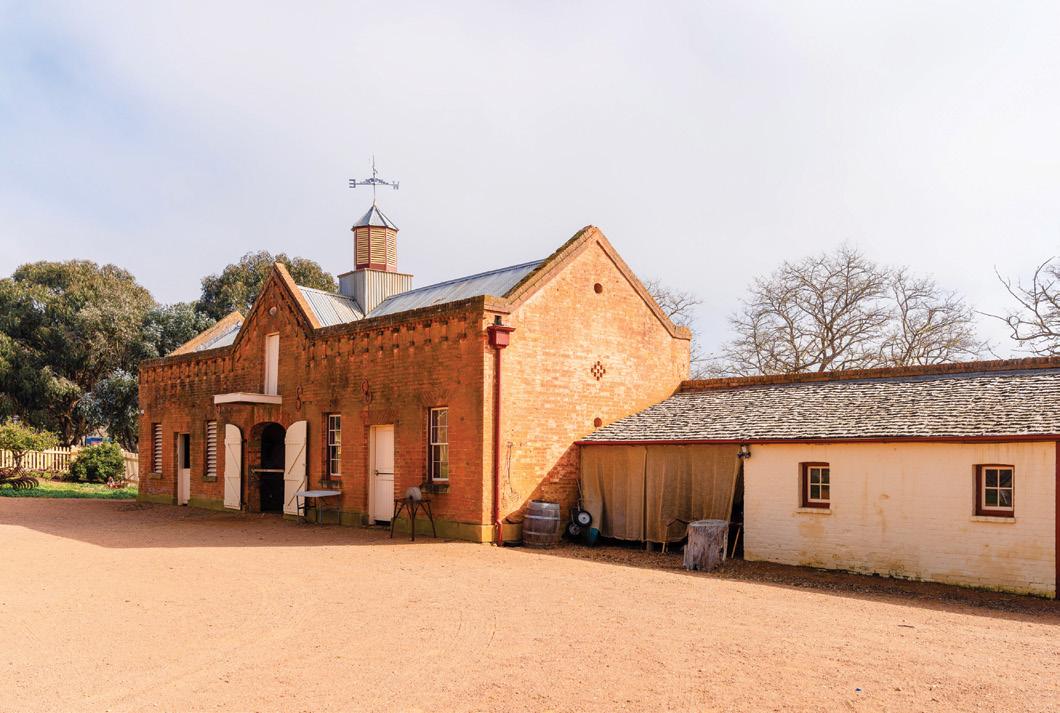
Update
4
National Trust (NSW)
Central Station plans still fall short
Public feedback regarding the Central Station Precinct redevelopment was released in late 2023, showing a largely negative community response. Most concerns focused on the scale of development and its impact on the existing heritage. Revised designs show very little change, with large towers still planned along the rail corridor, building over all platforms and blocking important views. The National Trust will continue to advocate for a better heritage outcome for Central Station.
Heritage under threat
The Transport Oriented Development program and Diverse and Well-Located Homes reform propose zoning changes to land surrounding railway stations and town centres across 43 local government areas. The National Trust estimates this will impact two-thirds of the heritage items listed in NSW. Rezoning these areas for greater density will impact communities from the Hunter to the Shoalhaven, across Greater Sydney and to the Blue Mountains. We acknowledge the need to address housing shortages, however we call for heritage to be protected as part of a planning solution.
A revitalised Powerhouse
The National Trust welcomes plans for a heritage revitalisation of the Ultimo Powerhouse Museum, including the retention of the iconic 1988 Wran Building and new connections to the Goods Line. However the National Trust argued it was not necessary to close the museum as part of this process. The museum has now closed and while preliminary architectural visions are in preparation, we remain focussed on ensuring that any new development will acknowledge the heritage of the site and showcase the entirety of the museum’s collection.

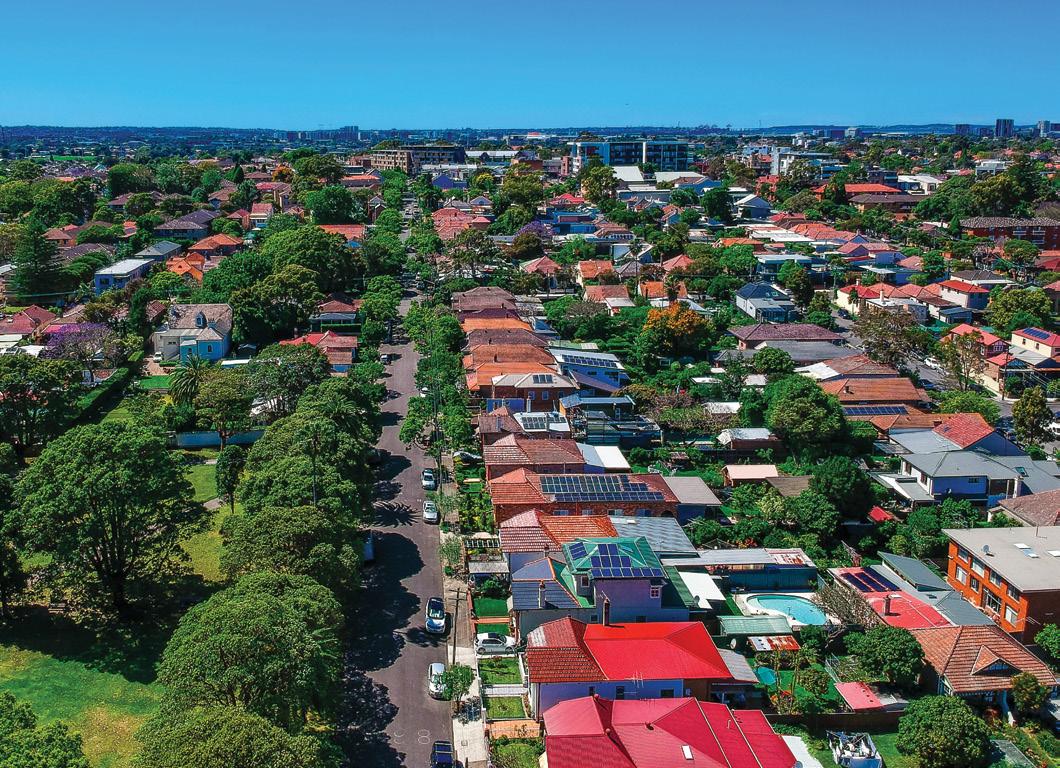

ADVOCACY NEWS
Want more news and updates? Get our latest news, events and special offers delivered straight to your inbox. Sign up to our e-newsletter at nationaltrust.org.au/enews-nsw Update
Opposite from top Education in action at Old Government House (photography by Katje Ford); S.H. Ervin Gallery (National Trust image); Cooma Cottage (photography by SGR Photo).
5 April – September 2024
From top Central Station (photography by Squirrel_photos, pixabay.com); communities will be impacted by zoning changes (photography by iStock); Ultimo Powerhouse Museum (National Trust image).
Protecting History at Harper’s Mansion
BY NICK CORBETT, NATIONAL TRUST GENERAL MANAGER, PROPERTIES
Known for its charming Georgian architecture, heritage gardens and magnificent hedge maze, Harper’s Mansion in Berrima is a fine example of a colonial-era property in the NSW Southern Highlands. As we embark on a new appeal to restore the house and gardens, the National Trust’s Nick Corbett takes a closer look at its eventful history.

CONSERVE
National Trust (NSW) 6
The town of Berrima is on Gundungurra and Tharawal Country in the Wingecarribee region, named for its large perennial river. James Harper was among the first wave of colonial settlers to arrive in the area, helping move cattle south from Sydney in the early 1820s, before becoming Chief Constable in the Government town of Bong Bong. Unlike his illiterate parents, Harper had been educated in Parramatta, could read and write and had a keen eye for opportunity. In 1826, he married the convict Mary Robinson and the pair moved to Berrima, where they built the Surveyor General Hotel.
It was named in honour of Sir Thomas Mitchell, whose Great South Road replaced the Old South Road as the main transport route heading south. Mitchell’s new road was more suitable for transportation, avoiding the steep slopes of the Mittagong ranges. Berrima, on the Wingecarribee River, was selected as a site for a new Government town and Bong Bong soon became a ghost town.
In 1834, the Harpers purchased 100 acres overlooking Berrima for 28 pounds. Harper’s Mansion, a two-storey Georgian townhouse, was built several years later with outbuildings including a kitchen and stables. The walls were three bricks thick, all made locally at a time when labour was plentiful. While the success of the colony was built on a system that rewarded convict reform, life was hard, with only three of the seven Harper children surviving.
Harper was a heavy drinker and after mortgaging the property, found himself in financial difficulty and died in 1845. The mortgagee William Hutchinson’s death soon

followed, but it appears the estate allowed Mary and her children to remain at Harper’s Mansion. Two years later, Mary married James McDermott and moved into the Surveyor General Hotel. McDermott died in 1850 and Mary six months later, at the age of 48.
Early restorations
An advertisement in The Sydney Morning Herald in 1850 provides a useful snapshot of the ‘Harper’s Hill’ house and garden, including mention of a never-failing source of water close to the kitchen. This spring has long since gone and today the property relies on one tap supplying town water.
The Catholic Church bought the property in 1853, using it as a presbytery and a home for nuns until around 1910, when it was tenanted out by the Church. The Catholic Church was prominent in Berrima – they built a church on the site of the original convict stockade and the nuns opened a school in town.
However, the construction of the Great Southern Railway in the 1860s saw two new towns emerge, Bowral and Moss Vale. Berrima had been bypassed and, like Bong Bong before it, became a backwater. It remained this way until the 1920s when the motorcar allowed for affordable, independent travel, leading to the rediscovery of this colonial-era town.
Unable to maintain the property, the Catholic Church sold it in early 1970 to Robert Cox of Berrima Estates, who divided the property into four blocks. Following pressure from the local community, who were keen to see the property saved, Mittagong Council used
‘In 1834, the Harpers purchased 100 acres overlooking Berrima … Harper’s Mansion, a two-storey Georgian townhouse, was built several years later’
 Opposite
Built in the late 1830s, Harper’s Mansion was the finest house in Berrima (photography by SGR Photo).
Below from left
Elements remain from the Catholic Church’s occupancy (photography by SGR Photo); the house museum offers a window to the colonial era (photography by Michael Kennedy).
Opposite
Built in the late 1830s, Harper’s Mansion was the finest house in Berrima (photography by SGR Photo).
Below from left
Elements remain from the Catholic Church’s occupancy (photography by SGR Photo); the house museum offers a window to the colonial era (photography by Michael Kennedy).
7 April – September 2024
a Federal Government Grant to purchase Harper’s Mansion in 1978. Ownership was transferred to the National Trust later that year. As with many early National Trust acquisitions, the primary goal was preservation.
Between 1979 and 1985 extensive restoration work was undertaken, funded by the National Trust’s Activities Committee. The building was re-roofed and external brickwork, stone and joinery were restored. Inside, floors and ceilings were repaired or replaced and the old staircase was removed and rebuilt. The original fireplaces, windows and doors were stripped and stained. While most of the house was returned to the 1830s period, vestiges of the Catholic occupancy remain in the dining room ceiling and corridor friezes. This work was done to the highest of standards, yet half a century later some elements, such as the stair treads, are now in need of urgent attention.
Tending the garden
While the interpretation of the house was reasonably straightforward, debate around the garden ensued for many years. The volunteers were keen to see progress, working with the National Trust to protect heritage. Esteemed
heritage architect Dr Clive Lucas OBE was engaged to uncover physical evidence. In 1984 – 138 years after the Harpers’ occupancy –Clive Lucas found “the remains of a squared cottage garden in front of the house with an axial path and evidence of a fence and gateposts”. It wasn’t until the property was leased to landscape gardeners Michael and Sue Jackman from 1999 – 2006 that a solution was reached. With funds to invest in the garden, the Jackmans planted a maze on the site of the original stables, bounded by a rise of catmint and lavender. Trees were planted in the lawn and curvilinear paths formed garden beds of shrubs and perennials. Unfortunately, plans to implement an irrigation system never came to fruition, something the upcoming appeal hopes to rectify.
Despite these recent changes, the garden retains a relationship to the house and echoes to the past. A kitchen garden complements the original kitchen archaeological site (pictured), with fruit trees and plants that reflect the early provenance of the house. Elements of the 1850 garden design remain – as The Sydney Morning Herald noted at the time: “Fronting the house about an acre
Help us make Harper’s Mansion a-mazing again
‘The success of the Harper’s Mansion garden relies on the dedication of its many volunteers.’

Harper’s Mansion, a beautiful 1834 mansion in Berrima, is in urgent need of repairs. With your help we can transform the gardens, install drainage and irrigation systems, protect its archaeological history, and commence internal repairs and maintenance. A donation of just $180 will help us maintain this heritage property for future generations to enjoy.
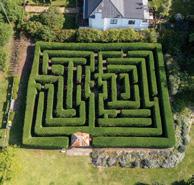
Resurface maze paths

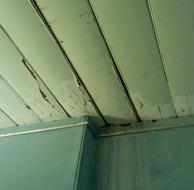
Protect archaeological site Repair and paint interior
Please donate today at nationaltrust.org.au/donate-appeal-nsw
National Trust (NSW) 2024 Harper’s Mansion Appeal
Opposite from top Harper’s gardens (photography by SGR Photo); the impressive hedge maze (photography by SGR Photo); the original kitchen’s archaeological site is in need of conservation and protection (National Trust image).
National Trust (NSW) 8



of land is handsomely laid out as a flower garden. In the rear is a large Kitchen Garden well stocked with choice fruit trees.” A focus of the appeal will be works to protect and interpret this archaeological site.
Today, the garden at Harper’s Mansion is a place of great harmony and beauty. The garden opens up before you like a broad meadow of shrubs and perennials. Ancient fruit trees are scattered among the garden beds, complemented by stands of heritage roses and heritage camellias. The eye is drawn to the distant eucalypts and for a moment you believe you have stepped back in time. While the illusion is broken by the occasional passing car, the tranquillity of the garden remains.
The success of the Harper’s Mansion garden relies on the dedication of its many volunteers. On a typical day up to 19 volunteers can be found working around the grounds. The property is open to the public each Saturday and Sunday, and many visitors comment that Harper’s Mansion has three key attractions: the house, the garden and the volunteers. It really is a community hub in the Southern Highlands.
The Harper’s Mansion appeal is an opportunity to allow this significant house and garden to reach its full potential, while giving back to the wonderful volunteers of Harper’s Mansion.
While the initial restoration work (1979 – 1985) focused on the house, the current appeal will focus on the garden, ensuring the sustainability of the whole property for generations to come.
A special thank you to the Harper’s Mansion Management Committee and volunteers past and present for their extensive research and care for Harper’s Mansion. Thank you also to Chris Thompson, whose research on the gardens helped inform this article, and special mention to Keith and Anthea Walker-Smith and Eric Savage for their longterm service and advocacy for Harper’s Mansion.
Save the irreplaceable
We need to raise $230,000 before 30 June, to make Harper’s Mansion sustainable for the future. New drainage and irrigation systems are required, the interiors need to be repaired and painted, and the archaeological site is in need of a cover to protect it from the elements. Show your support for the Harper’s Mansion appeal. Please donate today at nationaltrust.org.au/donate-appeal-nsw
9 April – September 2024
Historic Braidwood –A Town of Living Heritage
BY ANNE SANDERS, ART HISTORIAN AND CURATOR
Autumn presents the heritage-listed town of Braidwood in the Southern Tablelands in glorious shades of gold and deep russet, making it the ideal time to visit and explore. Ahead of the Braidwood Country Weekend in May, art historian, curator and long-time resident Anne Sanders takes us on a tour of the town’s attractions.
This is the Country of the Dhurga-speaking peoples of the Yuin nation, and the Dhurga Rock, a carved sculpture by artist Ian Marr located in Ryrie Park in the centre of Braidwood, acknowledges the region’s Indigenous history.
In 1835, the town was named after Dr Thomas Braidwood Wilson’s Braidwood Farm and in 1839, the area was surveyed with wide streets following a Georgian grid pattern. The street names acknowledge the founding settlers who were offered land grants in 1826, including Coghill Street (Captain John Coghill of Bedervale), Wallace Street (Hugh Wallace of Nithsdale), Elrington Street (Major William Sandys Elrington of Mount Elrington) and Bunn Street (George Bunn, St Omer).
A renewed vision for Mount Elrington
Three hours south of Sydney and half way between Canberra and the south coast on the Kings Highway, this rural village is home to a thriving creative community of artists, designers, film makers and specialist crafts people, as well as being the agricultural base for the surrounding farming region.

Mount Elrington homestead is located on the Shoalhaven River, about 16 kilometres from Braidwood. Major Elrington was granted 2,560 acres in 1826, emigrated to Australia with his son and old nanny (then 75), and on arrival headed directly to the Shoalhaven River to take possession of the land grant. By late 1828, a modest four-room wooden house had been constructed, the first house built in this area. By 1830, the house included a large dining room (which doubled as a courtroom, as Elrington had been appointed magistrate), a drawing room with substantial outbuildings and a stone kitchen. Elrington sold the property in 1846 to Sir Charles Nicholson (one of the founders of Sydney University) and returned to England.
For the current owners Antony Davies and Andrew Gow, Mount Elrington marks the third early property that they have restored in Braidwood over the past 25 years. Antony notes that, “Mount Elrington provides an enticing example of colonists trying their best to emulate the comforts of their homeland with limited skills, scarce materials and untrained labour.”
The owners undertook a Conservation Management Plan in 2020 and a major restoration is underway, reinstating the rooms to their original use where possible. The garden is also under restoration. Today, the property is run as a domestic farm animal sanctuary.
EXPLORE
National Trust (NSW) 10
Recording history at Nithsdale
Nithsdale on Wallaces Gap Road, Ballalaba was granted to Hugh Wallace in 1826 with construction on the house commencing in 1833. Built in late Georgian colonial-style design, the original house had seven rooms and was constructed of locally made and fired bricks. The discovery of gold transformed the district, attracting thousands of people to the area – including bushrangers. The notoriety of the local Clarke gang saw Hugh Wallace offer Nithsdale to the police in 1866 as a base for a gaol and barracks.
Since 1996, the current owners, Tim and Janey Lenehen have undertaken major refurbishments of the house, old gaol and farm buildings. Inveterate collectors, the Lenehens have displayed Georgian furniture, period portraits and contemporary Australian paintings throughout. The grounds around the house are laid out as a formal park and the property is run as a working cattle farm.
Tim sees Nithsdale as “living history … I feel its rarity is that it records beginning of [colonial] settlement through the introduction of sheep and cattle, the gold rushes, depressions, two World Wars and now climate change.”
A warm welcome at Bedervale
The John Verge-designed country cottage Bedervale is a National Trust-listed heritage homestead on the outskirts of town. Commissioned by Captain John Coghill in 1836, the building was completed in 1840 and is set in an enclosed threeacre garden. It’s a substantial brick rendered building with wideflagged verandahs and several buildings including stables, coach house, school room and kitchen forming the rear courtyard.
On Coghill’s death in 1853, the property was inherited by his daughter Elizabeth who had married Robert Maddrell. Bedervale remained in the Maddrell family until it was sold in 1973 to Roger and Margaret Royds.
Although a privately-owned property, the original contents dating back to early Coghill and Maddrell occupancy were acquired by the National Trust (NSW), providing a unique time capsule. The 500-hectare property is a working sheep and cattle farm and is operated by Mark and Sonia Horan (née Royds), who also offer bed and breakfast accommodation and run tours of the homestead by appointment.
“Living in Bedervale is like having a hammer in one hand and a paintbrush in the other!” Sonia quips. “However, there are plenty of destinations for guests to visit and plenty of room around the dining room table.”
Visiting Braidwood
This sense of hospitality is felt throughout the town of Braidwood. To explore the historic town, the Visitor Information Centre offers free maps of the Braidwood Heritage Walk which lists 50 places of historical interest in an easy walk around town. The Braidwood Museum (braidwoodmuseum.org.au), run by the Braidwood and District Historical Society, opens on Fridays and Saturdays, with unique displays of the area’s colonial, gold rush, early farming and film histories.

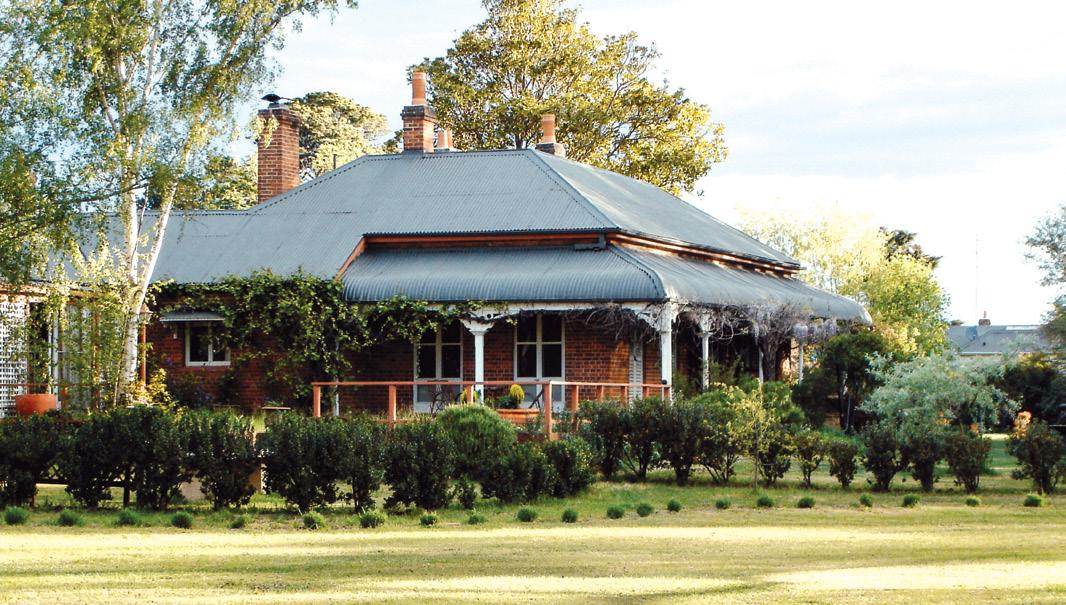

From top
Mount Elrington, where a major restoration is underway (photography by Antony Davies); Nithsdale, run today as a working cattle farm (photography by Janey Lenehen); Bedervale, a privately-owned National Trust-listed heritage homestead (photography by Kathy Toirkens).
Opposite
The Visitor Information Centre is located in the Braidwood National Theatre on Wallace Street (photography by Gordon Waters).
Visit Braidwood
For a rare chance to explore these and more fascinating historic houses, join the National Trust’s Women’s Committee’s Braidwood Country Weekend. Held from 4 – 5 May, this is an unmissable event for lovers of heritage to experience properties that are rarely open to the public. For more details and to reserve your place, visit nationaltrust.org.au/event/braidwood-country-weekend
11 April – September 2024
Art and Activism in the Life of Portia Geach
BY DR JULIE COTTER, ART HISTORIAN
Established by Kate Geach in memory of her sister, the Portia Geach Memorial Award recognises portraiture by women artists. With the award now in its 60th year – and a very special program of events planned at the S.H. Ervin Gallery to celebrate – art historian Dr Julie Cotter reflects on the life of artist Portia Geach, her activism and love of portraiture.
Portia Geach achieved several firsts in her life, but winning the Archibald was not one of them. Born in Melbourne in 1873, she attended the National Gallery School before applying to the Royal Academy of London, encouraged by Bernard Hall, Director of the National Gallery of Victoria. Proudly, Portia announced she was the first Australian woman to be admitted, receiving tuition under the likes of John Singer Sargent and George Clausen, with her family supporting her aspirations.
Portia was indeed a product of her family. Her father, a draper, had subverted the notion that Parisian clothing was only for the wealthy and he imported patterns for the working woman. Portia’s brother Frank introduced her to the Gippsland countryside where she styled herself as the modern woman, riding astride a horse in rational dress for 300 miles (480 kilometres) across its hills and valleys, her love of the region reflected in Landscape with Purple Field. Older sister Miriam connected Portia into the suffrage movement and women’s clubs, Portia becoming part of the circle of Vida Goldstein, Catherine Spence, Miles Franklin and Alice Henry. Her older brother Edwin, the theatre entrepreneur with an eye for design and architecture, taught Portia the art of marketing. Upon her return from London, she established an Academy of Art, advertising in the daily press and exhibiting widely.
Two paths emerge
In 1917, Portia founded the NSW branch of the Housewives Association of Australia. Despite never marrying, she became the voice of the housewife. She was present at the conference to establish the Country Women’s Association and extended her network across the ocean to the American General Federation of Women’s Clubs, attending their biennial congresses.
Portia also stayed close to her fellow women artists. When she returned from a sojourn living in New York from 1920 – 1921, she presented a talk to the Women Painters’ Club, The Daily Telegraph describing her as “gowned in an artistic smock frock of grey and black”, ensuring all were aware of her recent proximity
Below
Ferries at dusk, Lane Cove River by Portia Geach, oil on canvas. S.H. Ervin Gallery collection, National Trust of Australia (NSW). Donated through the Australian Government’s Cultural Gifts Program by John F. Gilfillan, 1994.

REFLECT
National Trust (NSW) 12
to Greenwich Village. In New York, Portia had studied the art of gold leaf in mural painting, the process transformative, and she incorporated the blazing effect in her work. Her Autumn Wooded Parklands with Picknickers is typical of her style in the 1920s.
The Geach family adored Sydney’s harbour and, following the release in late 1921 of the prospectus for Sydney’s new ‘skyscraper’, The Astor apartments on Macquarie Street, Portia, Miriam and Kate signed up as shareholders. Portia’s 12th floor apartment provided views to the emerging Sydney Harbour Bridge, the subject of many of her paintings, while time spent meandering along its tributaries resulted in scenes such as Ferries at dusk, Lane Cove River
Portia’s battles were many – sugar, tea, butter and potatoes were her priorities. She mobilised her housewives to boycott the high price of potatoes and her success at disrupting the masculinist hierarchy prompted a potato grower to suggest the government should find a husband for Miss Geach to keep her busy! Yet in between the activism there were portraits of notables such as Sir John Quick who led the 1907 Royal Commission into Commonwealth tariffs; war correspondent Donald Macdonald; and, as a further reflection of Portia’s range of interests, the theosophist Curuppumullage Jinarajadasa.
Politics meets portraiture
It was during the Maternity Bonus Conference in 1923 that Portia spent time with Edith Cowan, the first woman elected to an Australian parliament. A firm friendship developed, both women committed to social justice and Australian women delegates at the League of Nations. Another outcome was Portia’s portrait of Edith, a tender and skilful work suggesting a portrait career that would have burgeoned with more time. The portrait is refreshing, it anticipates the intimacy and spirit to be found in portraits by William Dobell, with Edith appearing to have raised her eyebrows in response to a question. The glasses are the centrepiece, Portia guided by her knowledge of a woman who was steadfast in the heat of debate, intelligent and business-like. The portrait is now in the Parliament of Western Australia collection.
Portia’s portrait is fleshy and vibrant, the soft flow of Edith’s greying hair and favourite accessory of a lace shawl attesting to her age, wisdom and gender. It is likely that it is the portrait Portia submitted to the Archibald Prize in 1923 but she had no chance against the dark tonal Portrait of a Lady by William McInnes, his third win in the three years of the Archibald. Portia entered just once, although she discussed the preparation of portraits many times.
Caught between two careers – the artist and the advocate –Portia is not represented in the state collections of NSW or Victoria. The exhibition scheduled to coincide with 60 years of the Portia Geach Memorial Award assists in an historical correction, with past winners presented alongside Portia’s work to celebrate this important artist.
Dr Julie Cotter’s third book, Portia Geach: Portrait of an Activist, is due to be published in September 2024, with support from Creative Australia.
Milestone moments in the Portia Geach Memorial Award
For the past 60 years, the annual award has attracted Australia’s leading women portrait artists, including these notable winners.
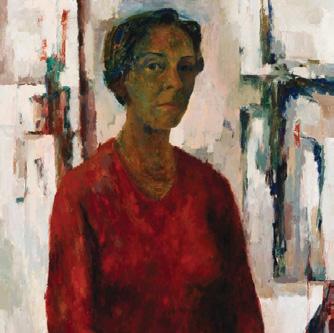




Sydney painter Jean Appleton was the inaugural winner of the prize for her self-portrait, which is now held in the National Portrait Gallery’s collection.
One of Australia’s best-known contemporary portrait artists, Wendy Sharpe took the prize for the first time with her Self Portrait with Students, After Adelaide Labille-Guiard
At the age of 86, painter Nancy Borlase was one of the oldest Portia Geach prize winners, with The Sisters: Marie and Vida Breckenridge
Kate Stevens first won the award for Indian Dream , her portrait of Willy Bernardoff, before going on to take it a second time last year.
Lynn Savery’s Kindred Spirits –a portrait of her friend Eloise da Silva – turned heads with its surreal landscape and generous dimensions.
Visit the exhibition
Portia Geach Memorial Award at 60 opens at S.H. Ervin Gallery on Friday 30 August, running until Sunday 20 October 2024. Check opening hours and ticket prices to plan your visit at nationaltrust.org.au/nsw
1965 1995 2000 2011 2022 13 April – September 2024
Understanding New Challenges for Historic Gardens
BY SHERIDAN BURKE, CHAIR, ERYLDENE TRUST

With climate change impacting historic gardens across the world, heritage consultant Sheridan Burke shares valuable insights from Eryldene on Sydney’s North Shore. Renowned for its internationally significant collection of camellias, Eryldene’s house and garden are the focus of a proactive approach directed at building resilience to climate change.
The impact of climate change has far-reaching consequences for historic gardens. Longer hot spells moisture-stress plantings, reducing growth and increasing susceptibility to pests and disease, while more intensive rainfall overwhelms historic drainage systems. At the same time, we’ve seen an increase in extreme weather events that bring the cancellation of museum events and reduce visitation.
As attention turns to the need for more sustainable gardening practices across the State, the example of Eryldene, in the heart of Sydney’s leafy North Shore, may offer some useful insights. Eryldene was designed by architect William Hardy Wilson and built for Professor E.G. Waterhouse in 1913 – 1914; together they began the remarkable garden design and plantings. This culminated in a house and garden setting that is a work of art, with an internationally significant collection of camellias
PROTECT
National Trust (NSW) 14
– all of which is listed on the NSW State Heritage Register. Since Eryldene left family ownership, it has been managed by a community trust of volunteers.
Making decisions for the future
The pandemic lockdowns of 2020 – 2022 afforded the Eryldene Trust time to hold conversations about its future goals managing a house museum, and how the garden could adapt to the impacts of climate change that were already observable. The Eryldene Trust also reviewed the Eryldene Conservation Management Plan, adding new policies for conserving the garden and responding to climate change.
Well before the Black Summer fires of 2019 – 2020, Eryldene was already very carefully assessing its water management and irrigation practices. Professor Waterhouse was an astute gardener, planting many specimens in large tubs to manage feeding and watering in less favourable areas of the garden.
The Eryldene Trust continued and augmented these careful water management practices, constructing three rainwater storage tanks under the driveway 15 years ago to harvest up to 27,000 litres of roof water runoff for garden use.
To further build resilience to climate change, Eryldene began by developing a Water Management Plan at the end of 2018, charting water usage across sections of the garden. Ironically, the first draft was completed during the floods of late 2020, and Eryldene has continued to adjust the watering regimen by regularly modifying irrigation systems as needed.
Learning from others
The Eryldene Trust also undertook extensive research and reached out internationally to other historic gardens to share experience, specifically with historic camellia gardens. In March 2023, supported by a grant from Create NSW, the Eryldene Trust partnered with the National Trust (NSW) and the Australian Garden History Society (AGHS) to develop a global webinar, CRUNCHtime (Climate Resilience Understanding New Challenges for Historic Gardens). Speakers from Australia, the US and UK were invited to share their experience.
The webinar demonstrated that globally, much work is underway to manage resilience for plantings of horticultural significance –sometimes by moving plant collections. In his CRUNCHtime talk, Dr Tim Entwisle, then Chief Executive of Royal Botanic Gardens Victoria, spoke about its Landscape Succession Strategy and its intention to transfer the rhododendron collection from Melbourne to the higher altitudes of the Dandenongs. He also presented the AGHS’ Climate Change Framework for Action, which offers guidance on how to mitigate and adapt to the
effects of climate change for Australian gardeners. Other webinar speakers shared problems – from the expected loss of frost in the south of the UK to the increasing frequency of wildfires in California; replacement tree species in Adelaide to water management in suburban Sydney.
A proactive approach to climate action
As Eryldene’s horticultural collection is an exceptionally important element of its significance, the Eryldene Trust’s objective is to protect and retain the horticultural collection in situ. In 2020, it developed a climate risk register. Assisted by expert project volunteer Emma Bombonato, the Eryldene Trust produced a short Environmental Sustainability Action Plan (ESAP) that helps integrate sustainability in all aspects of operations, from energy purchasing to events management, as well as garden activities.
Lawn irrigation has ceased; the higher priority is any necessary irrigation for the camellia collection. Gradual change of the grass on the lawn tennis court to a more water-economical species is proceeding. The Eryldene volunteer gardening team has always taken cuttings to ensure succession propagation of rarer plants – this activity has increased and some special plants are sent to other gardens to diversify their survival possibilities.
Responding to the increase of extremely heavy rainfall events the Eryldene Trust has installed additional drainage and increased building roof maintenance practices. A sustainability checklist for all events has been introduced to ensure minimisation of the carbon footprint as well as that of visitors. Open Garden Friday tours are run monthly by the volunteer gardeners, showing the camellia treasures of Professor Waterhouse’s collection and explaining what Eryldene is doing to build its resilience to climate change. All of this will help Eryldene survive as a public historic house and garden museum and spread the word that everyone needs to be taking climate action and talking about it.
Adapting National Trust places to climate change
At the National Trust, we’ve started taking the first important steps towards making our historic gardens and places more climate resilient. So far, water tanks at Saumarez Homestead, Dundullimal Homestead and Riversdale are helping to keep gardens water-wise, while a generous donation enabled the installation of solar panels at Saumarez Homestead for sustainable energy use. We’re also developing garden plans to encourage more resilient gardening.
While it’s just the beginning of our climate change journey, we’re looking forward to sharing more changes with you in the future.
Get involved
Learn more about climate action in historic gardens around the world. Eryldene’s CRUNCHtime webinars are available to stream on the Eryldene website at eryldene.org.au
15 April – September 2024
Opposite Eryldene on Sydney’s leafy North Shore (photography by Lindy Kerr).
It’s festival time!
The Australian Heritage Festival returns from 18 April – 19 May. Join in the fun and celebrate our State’s diverse heritage with an exciting program of exhibitions, performances, tours, talks and much more. Start planning your adventures today! View the full program of events at nationaltrust.org.au/ahf/nsw
Event details are correct at the time of printing. Please check the Australian Heritage Festival website or the National Trust website for updates and to purchase tickets.




National Trust (NSW) 16
FRESH ARTS TIMELESS EXHIBITION
DUNDULLIMAL HOMESTEAD, DUBBO
UNTIL 29 APRIL, FRIDAY, SATURDAY & MONDAY, 11AM – 3PM
Browse Timeless , a special 20th anniversary exhibition of works by 35 artists including potters, fabric artists, sculptors, photographers and painters, each with a different style or medium.
Tickets: Free exhibition entry

BACK TO BLACK
OLD GOVERNMENT HOUSE, PARRAMATTA
UNTIL 10 NOVEMBER, THURSDAY – SUNDAY, VARIOUS TIMES
Explore the different meanings of black in fashion across the last century, told through a stunning selection of unique collection items rarely on public display.
Tickets: Members free, adults $15, concession $12, family $42, children under five free
OPEN DAYS AT MISS PORTER’S HOUSE
MISS PORTER’S HOUSE, NEWCASTLE WEST
SECOND SUNDAY MONTHLY, APRIL – SEPTEMBER & 10 JUNE, 1PM – 4PM
Plan your visit around the changing monthly themes: marvel at pictures from the past; celebrate Mother’s Day; enjoy a special long weekend of fashion; browse hidden treasures from the UNESCO-recognised collection; learn more about the Porter family history and celebrate spring in the garden.
Tickets: Members free, adults $12, concession $10, family $34, children under five free
FINDING HOME
EVERGLADES HOUSE & GARDENS, LEURA
6 – 28 APRIL, THURSDAY – SUNDAY, 11AM – 3PM
Inspired by the natural cycle of life and decay, these unique works are forged directly from the earth at Everglades House & Gardens by Blue Mountains artist Clare Delaney.
Tickets: Members free, adults $17, concession $15, family $49, children under five free
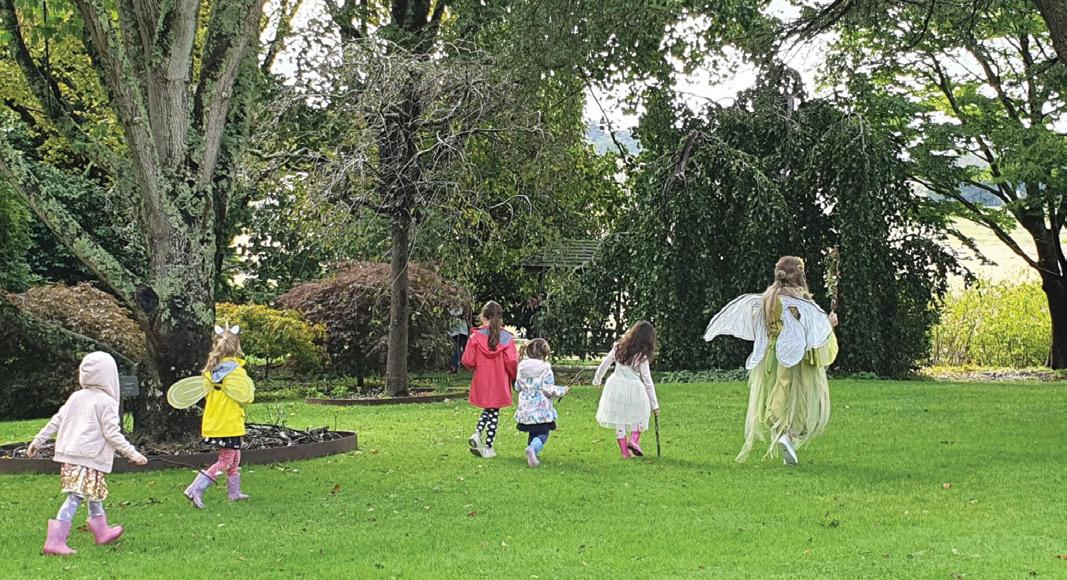
FAIRY ESCAPADES
RETFORD PARK, BOWRAL
13 APRIL, 11AM – 12PM
EVERGLADES HOUSE & GARDENS, LEURA
19 & 20 APRIL, 10:30AM & 1:30PM
Young children will enjoy an enchanting live theatre performance as they explore hidden garden nooks with Fairy Lilly and other mischievous creatures.
Tickets: $25, children under three free

CREEPY STORIES
OLD GOVERNMENT HOUSE, PARRAMATTA
18 APRIL, 4PM – 5PM
Eerie incidents and scary sightings will be revealed in a delightfully spooky heritage setting at this special kids’ twilight tour. All mini ghostbusters in training are invited!
Tickets: Members $20, adults $25, family $60, children over nine $15
STEP INTO THE SHADOWS TO SEE THE LIGHT AT MORRIS
HOTEL MORRIS, HAYMARKET
18 APRIL – 17 MAY, THURSDAYS & FRIDAYS, 11:30AM & 5:30PM
Embark on a guided tour unveiling the rich history and architectural grandeur of the heritage-listed Hotel Morris, followed by a specially crafted menu of mouthwatering Italian dishes.
Tickets: $75
View the full program of events and book tickets at nationaltrust.org.au/ahf/nsw 17 April – September 2024
Calendar
Calendar

WATER – WORKS
WHITE
COTTAGE GALLERY,
RETFORD PARK,
BOWRAL
18 APRIL – 26 MAY, THURSDAY – SUNDAY, 10AM – 4PM
View a unique exhibition of works inspired by water and brought to life using various mediums including clay, painting, jewellery, puppetry and sculpture. (Pictured: Water Reflections by Brock Sykes Paintings).
Tickets: Free exhibition entry
GHOST NIGHT
OLD GOVERNMENT HOUSE, PARRAMATTA
THIRD FRIDAY MONTHLY, 7:30PM – 9:30PM
What are those eerie sounds coming from seemingly empty rooms? Bring your torch and your bravery to unveil the secrets of Australia’s oldest surviving public building.
Tickets: Members $32, adults $35
SLY GROGGIN’ WITH KATE LEIGH THE GANGSTER QUEEN
JAZZY CAFÉ BAR, SURRY HILLS
20 APRIL & 11 MAY, 5:45PM – 9PM
Step back to the razor gang world of the 1920s and 30s at this immersive cabaret evening set on the site of Sydney’s first sly grog shop and former home of the Queen of Surry Hills, Kate Leigh.
Tickets: $97.65
SUTHERLAND SHIRE CITIZENS’ HERITAGE FESTIVAL
VARIOUS VENUES AND TIMES ACROSS SUTHERLAND SHIRE
20 APRIL – 19 MAY
Discover a colourful array of locally run events. Take a ride on a vintage bus or historic ferry; enjoy special live performances, exhibitions and tours; hear stories from the Indigenous Yarning Circle and much more.
Tickets: Prices vary

SALLY ROBINSON EXHIBITION
S.H. ERVIN GALLERY, OBSERVATORY HILL
20 APRIL – 2 JUNE, TUESDAY – SUNDAY, 11AM – 5PM
View a series of dynamic and innovative works from more than 50 years of art-making by Sydney-based artist, Sally Robinson. (Pictured: Ella Rubeli by Sally Robinson).
Tickets: Members free, adults $15, concession $12, family $42, children under five free
YARRAMALONG HERITAGE MULTI ARTS EXPO
YARRAMALONG OLD SCHOOL
21 APRIL, 10AM – 3PM
Discover Yarramalong’s natural, cultural and Indigenous stories, showcased beautifully through artwork, music and family-friendly activities. Fine food and beverages available.
Tickets: Entry by donation
COOERWULL HOUSE & BUILDINGS OPEN DAY BOWENFELS
21 APRIL, 10AM – 3PM
Cooerwull House opens its doors for one special day only. Explore the suite of buildings dating from 1826 and learn about the property’s history from knowledgeable guides.
Tickets: $25
OPEN DAYS AT WOODFORD ACADEMY
WOODFORD ACADEMY, WOODFORD
THIRD SATURDAY MONTHLY, APRIL – SEPTEMBER, 10AM – 4PM
This monthly calendar of events includes eye-catching ceramics by artist-in-residence Adrienne Richards; a celebration of International Museum Day; steampunk-style festivities; Christmas in July; a Books and Poetry Festival; and a talk by artist-in-residence Eloise Maree Crossman.
Tickets: Members free, adults $12, concession $10, family $34, children under five free
National Trust (NSW) 18
AUTUMN HOUSE & GARDEN INSPECTIONS
VARIOUS SITES, WINGECARRIBEE SHIRE
30 APRIL, 10AM – 4PM
Inspect three stunning properties in the height of autumn, selected for their beauty, difference and charm. Includes morning tea.
Tickets: Members $65, adults $75, concession $70
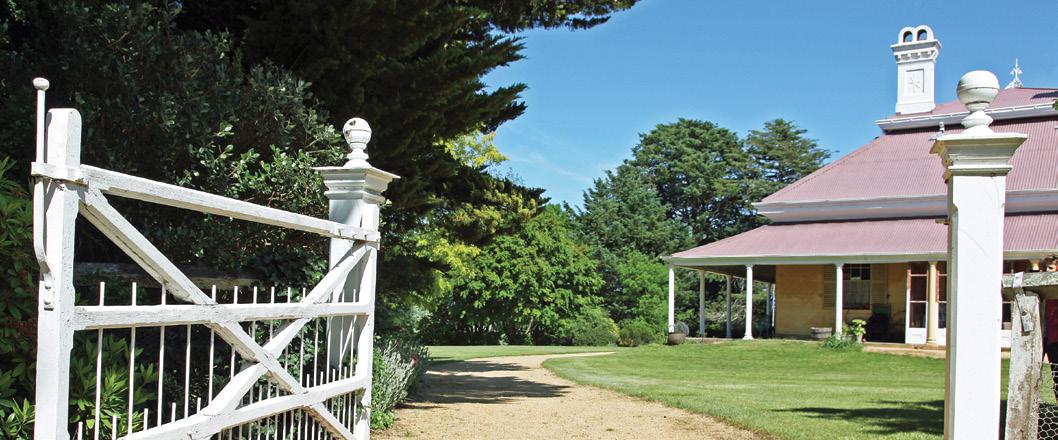
BRAIDWOOD COUNTRY WEEKEND
VARIOUS LOCATIONS, BRAIDWOOD
4 – 5 MAY
Women’s Committee Events and Inspections
Be transported back in time as you explore an array of historic houses rarely open to the public and meander through stunning autumnal gardens in charming Braidwood.
Tickets: Members $165, friends $195
THE MYSTERIES OF MULLET ISLAND
MEET AT BROOKLYN MARINA
10 MAY, 9:15AM – 4PM
Take a scenic heritage ferry ride to discover the rich Indigenous and colonial histories of Mullet Island, now known as Dangar Island, before enjoying a waterside lunch.
Tickets: Members $100, adults $125, children $50
MOTHER’S DAY DELIGHTS
GROSSMANN HOUSE, MAITLAND
12 MAY, 10:30AM – 3PM
For a special Mother’s Day treat, take a tour of this Victorian house museum and enjoy a splendid offering of wine and homemade delectables in the garden.
Tickets: Members $42, adults $55, concession $52
NATIONAL TRUST (NSW) 30TH ANNUAL HERITAGE AWARDS
DOLTONE HOUSE, PYRMONT
17 MAY, 11:30AM – 3PM
Celebrate our State’s diverse heritage projects, innovation and achievements. Look forward to an exciting speaker line-up, networking opportunities and a delicious three-course meal.
Tickets: From $165
HERITAGE DAY AT PARRAMATTA NORTH
5 FLEET STREET, NORTH PARRAMATTA
18 MAY, 8AM – 4PM
Discover incredible history and explore beautifully restored buildings at Parramatta North. Heritage Day is a family-friendly event featuring tours, talks, music, food and children’s activities.
Tickets: Free

THE EDINA ESTATE TOUR AND TEA
EDINA, WAR MEMORIAL HOSPITAL, WAVERLEY
19 MAY, 10:30AM – 1:30PM
Tour this historical gem, a grand private-home-turned-hospital, and learn more about family, faith and fortune in Victorian Sydney. Morning tea included.
Tickets: Members $55, non-members $65
Exclusive Member Events
BACK TO BLACK – TOUR AND MORNING TEA OLD GOVERNMENT HOUSE, PARRAMATTA
11 APRIL, 10:30AM – 12PM
Enjoy an exclusive tour led by an expert guide to learn about the development of the exhibition and the exciting discoveries made along the way. Afterwards, enjoy morning tea in the courtyard.
SALON DES REFUSÉS –TOUR, TALK AND MORNING TEA
S.H. ERVIN GALLERY, OBSERVATORY HILL
13 JUNE, 10AM – 11:30AM
Enjoy refreshments, a special viewing of the Salon des Refusés exhibition and an insightful floor talk.
Calendar
View the full program of events and book tickets at nationaltrust.org.au/ahf/nsw
exclusive
19 April – September 2024
Enjoy these
events, offered free as part of your National Trust membership. To book your tickets email membership@nationaltrust.com.au
Calendar
There’s plenty to enjoy after the Australian Heritage Festival wraps up. Take a closer look at what’s on in the coming months.

WINE AND JAZZ IN THE GARDEN
NORMAN LINDSAY GALLERY, FAULCONBRIDGE
25 MAY, 11AM – 4PM
Grab your loved ones and enjoy good music, good wine and good times! Sample wines, boutique beers and cider and sit with a cheese or antipasto platter while a live jazz band plays.
Pre-booked tickets: Members $40, adults $45, under 18s $20. Platters: $25

NSW SCHOOLS RECONCILIATION CHALLENGE EXHIBITION
EVERGLADES HOUSE & GARDENS, LEURA
25 MAY – 14 JULY, WEDNESDAY – MONDAY, 10AM – 4PM
BROUGH HOUSE, MAITLAND
3 – 25 AUGUST, WEEKENDS, 10AM – 3PM
Browse a colourful collection of student work exploring reconciliation and celebrating First Peoples’ ancient knowledge and connection to lands and waters. (Pictured: Earth’s Blood by Chullora Public School). Tickets: Visit the website for details
ENJOY VIVID FROM SYDNEY HARBOUR
KING STREET WHARF, SYDNEY
29 MAY, 7PM – 10PM
See the spectacular light festival from iconic Sydney Harbour during a three-hour cruise. Includes petit canapés, a sit-down three-course dinner and drinks.
Tickets: $155
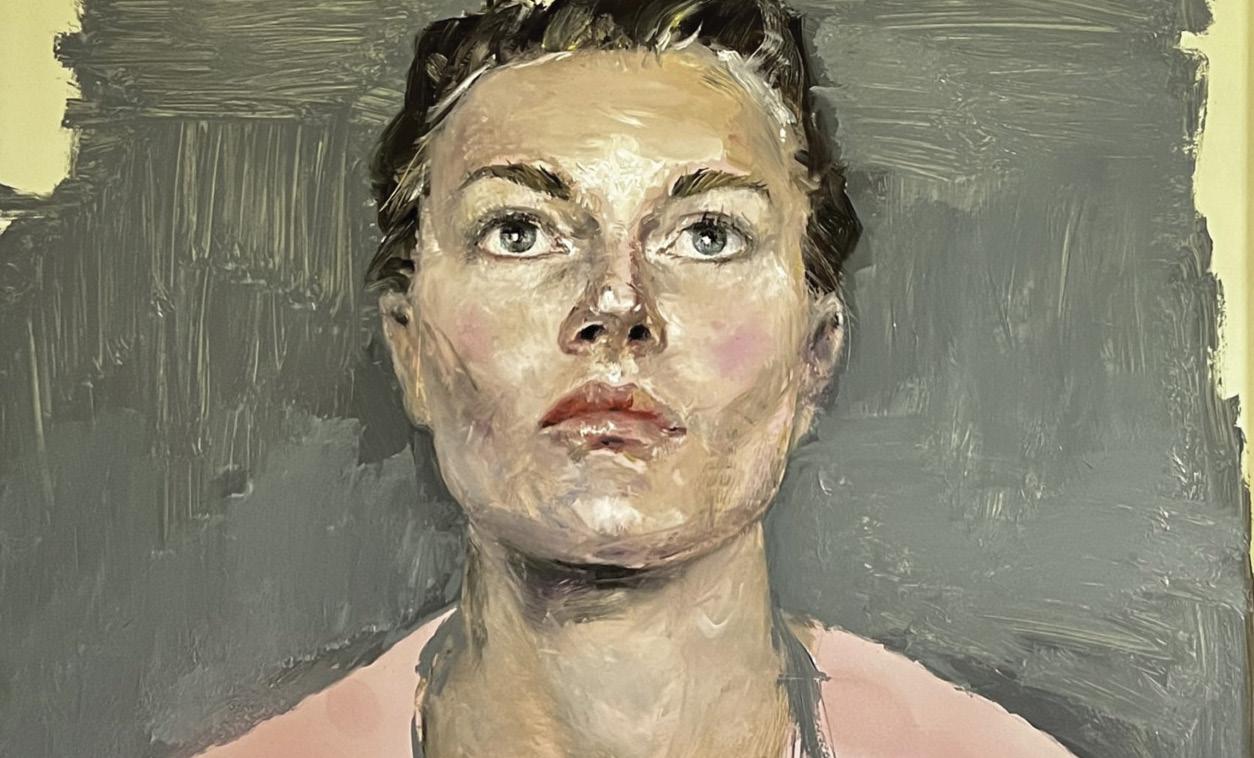
2024 SALON DES REFUSÉS
S.H. ERVIN GALLERY, OBSERVATORY HILL
8 JUNE – 25 AUGUST, TUESDAY – SUNDAY, 11AM – 5PM
View an incredible selection of ‘alternative’ works entered into the annual Archibald and Wynne Prizes, selected for quality, diversity, humour and experimentation. (Pictured: Sleep School (Self-Portrait) by Vanessa Stockhard).
Tickets: Members free, adults $15, concession $12, family $42, children under five free
STORY OF PYRMONT THROUGH ARCHITECTURE
MEET AT SOCIAL BREW CAFÉ, PYRMONT
25 JUNE, 10AM – 1PM
Discover Pyrmont’s colourful history and architecture on a fascinating guided walk led by a heritage expert from the Australian Architecture Association.
Tickets: Members $65, non-members $75
CARRINGTON HERITAGE WALK
MEET AT CARRINGTON PUMP HOUSE
6 JULY, 2PM – 4:30PM
Discover Carrington’s early industrial past and architecture. Hear stories of the town and its inhabitants, including crimes, accidents and occasions of civic pride.
Tickets: Members and concession $18, adults $20
National Trust (NSW) 20
TELLING TALES
EVERGLADES HOUSE & GARDENS, LEURA
17 JULY – 18 AUGUST, WEDNESDAY – MONDAY, 10AM – 4PM
From stunning embroidery to hand-painted banners, Telling Tales is a collection of stories, art and events that have shaped Everglades House & Gardens and the local community.
Tickets: Members free, adults $17, concession $15, family $49, children under five free
HERITAGE LECTURE: MAITLAND UNDER ATTACK? BROUGH HOUSE, MAITLAND
20 JULY, 2PM – 4PM
Hear an engaging talk by Dr Peter Hobbins, Head of Knowledge, Australian National Maritime Museum, and enjoy homemade canapés and a glass of wine in the garden.
Tickets: Members $25, adults $28, concession $25

PORTIA GEACH MEMORIAL AWARD AT 60
S.H. ERVIN GALLERY, OBSERVATORY HILL
30 AUGUST – 20 OCTOBER, TUESDAY – SUNDAY, 11AM – 5PM
This unmissable exhibition examines the work of Portia Geach and showcases winning works from the annual Award that bears her name, now celebrating its 60th year.
(Pictured: Autumn Detail by Portia Geach).
Tickets: Members free, adults $15, concession $12, family $42, children under five free
EN PLEIN ART WORKSHOP COOMA COTTAGE, YASS
14 SEPTEMBER, 10AM – 3PM
Explore the world of watercolour in the picturesque grounds of Cooma Cottage with local artist, Jeannine Andrews. Morning tea and light lunch included.
Tickets: $160
CASTLECRAG HISTORICAL TOUR AND TEA MEET AT WALTER PROVIDORE, CASTLECRAG
18 SEPTEMBER, 10AM – 1PM
Enjoy morning tea before setting off on a scenic guided walking tour around Castlecrag, one of Sydney’s most picturesque suburbs.
Tickets: Members $65, non-members $75
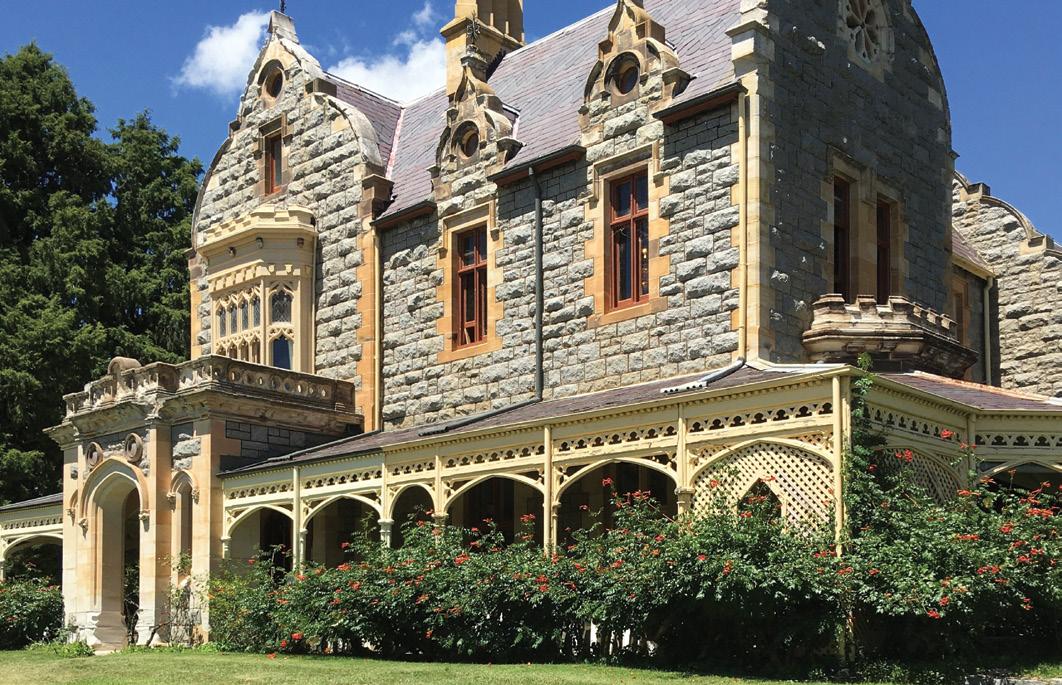
HISTORIC BATHURST AND DISTRICT COUNTRY WEEKEND VARIOUS LOCATIONS, BATHURST
28 & 29 SEPTEMBER
Women’s Committee Events and Inspections
The popular Looking at Architecture program returns this spring with a visit to private homes of unique heritage, historical and architectural significance in the Central West city and district of Bathurst, founded in 1815.
Register your interest: lindesay@nationaltrust.com.au
Celebrate International Dog Day
25 AUGUST, 10AM – 4PM
These two events are sure to get tails wagging!
RETFORD PARK, BOWRAL
Pay homage to our furry friends in stunning historic surroundings. Join a guided garden tour, have your pet’s ‘pawtrait’ taken, browse a range of gifts and so much more.
Tickets: Members free, adults $17, concession $15, family $49, children under five (and dogs!) free
NORMAN LINDSAY GALLERY, FAULCONBRIDGE
Look forward to doggy paw painting, fashion parades, a photo booth, food stalls and a photographer on-site to capture the fun. Pack a picnic or enjoy refreshments at the café.
Tickets: Free. Gallery entry: $10
To book tickets your tickets or find out more, visit nationaltrust.org.au/whats-on-nsw
Calendar
21 April – September 2024
What’s in Store for Winter
The National Trust shop is full of unique and inspiring gift ideas. Discover the latest books, homewares, accessories and more, with all purchases supporting the vital work done by the National Trust (NSW).



RARE BLOOMS UNCOVERED
The stories of 40 rare and endangered species are brought to life through exquisite botanical artworks sourced from the archives of the Royal Botanic Gardens, Kew.
Rare Plants: Forty of the world’s rarest and most endangered plants $49.99.
BIRD WATCHING
This set of six coasters features Australian native birds and is made from sustainably sourced Australian timbers. Available in Myrtle, Blackwood, Jarrah or Tasmanian Oak.
Timber coaster set $38.95.


BALMS WITH BUZZ
Nina’s Bees hand balms, muscle balms and face and neck balms are all made by the award-winning Blue Mountains apiarist Nina Tverskikh. All balms are 100% natural, and with no artificial fillers or fragrances. Balms $25.95.

STYLISH WINTER WARMERS
Stay cosy this winter with wrist warmers, beanies and gloves made from a luxurious blend of merino wool, possum fur and silk. Available separately and in matching sets, in a variety of colours. Wrist warmers $39.95, gloves $29.95, and beanies $39.95.
TURN OVER A NEW LEAF
Taking inspiration from the iconic Australian gum leaf, these earrings are crafted from Australian timber and presented on sterling silver earring wires.
Gum leaf earrings $34.95.
FLOWER SHOW
Crafted from 100% New Zealand wool, these felt leaf babies capture the essence of the natural world in a whimsical and playful way. The felt baby can be separated from the pocket of the leaf.
Leaf baby $19.95.

Scan the QR code to shop all products online, or visit shop.nationaltrust.org.au/collections/gift-guide SHOP
National Trust (NSW) 22
GIFTS UNDER $50
A Day to Remember
With its beautifully restored buildings and expansive gardens, historic Dundullimal Homestead in Dubbo is a picturesque spot for a country wedding. Here, three couples share their favourite memories from their special day.
A hidden gem
Maree Weber calls Dundullimal “a hidden gem of wedding venues in Dubbo”. She and husband Jack live on the land and appreciate that “Dundullimal Homestead encompasses the brilliant history of farming and country living. We adored the tranquillity of the outdoors and the beautiful garden space. It was also in a perfect location in Dubbo – not too far from town and convenient for vendors and travelling guests.”
Dancing in the rain
Kathryn and Dean Alchin chose Dundullimal for its “country feel, beautiful charm and nostalgia”, but heavy rain meant they had to implement “plan C”, moving the ceremony from the chapel into the reception hall. “None of the guests were any the wiser, it looked stunning and as if it was meant to be,” Kathryn notes.
The property’s homestead and stables provided a charming backdrop for photography and Kathryn says her memories of dancing in the rain with the bridal party are among her favourites from the day.
Her advice to others considering Dundullimal as a wedding venue is to utilise the entirety of the grounds. “The buildings, grounds and windmill make for amazing photos.”
Wide open spaces
The large established trees and open green spaces first attracted Alan and Myra Powell to Dundullimal Homestead. They also appreciated that it was reasonably priced and an easy 10-minute drive from town.
Sharing the occasion with her children and grandchildren –who all walked her down the aisle – is one of Myra’s most treasured memories from the day. “But best of all was meeting Al up the aisle and walking down to be married.”



Plan your next event
Dundullimal Homestead and many other heritage venues across NSW are available to hire for weddings, celebrations and other events. To learn more visit nationaltrust.org.au/venues-nsw
MEMBER MOMENTS
23 April – September 2024
From top Maree and Jack Weber; Kathryn and Dean Alchin; and Myra and Alan Powell all chose to be married at Dundullimal Homestead in Dubbo.
THANK YOU
Patrons, Corporate Members and Sponsors
The National Trust (NSW) acknowledges and appreciates the support we receive from these generous individuals and organisations
Platinum Patron
C Wilkinson OAM
Gold Patrons
G Arnott
J Burnswoods
J & L Calluaud
J Church
P & R Flick
H Hewitt
C & B Hindmarsh
Kimalo Foundation
C Sutherland
E Sydney-Jones
S Thomas
M Vellacott
Plus multiple anonymous
Silver Patrons
R Butler AM
Emeritus Prof D Carment AM
T Heazlewood OAM
P Homel & L Taggart
L Marcroft & G Brunner
Nell & Hermon Slade Trust
Pratten Foundation
Plus multiple anonymous
Bronze Patrons
L& J Benaud
R Burge & C Nadai
R Charley AO
J Farrell
G & T Graham
B & J Hambrett
E Heard
A Johnson
D Paisley
P Poland OAM
A Scott
A Smith
V Vargossoff
P & A White
B & G Windeyer
Dr J Yu AC
Plus multiple anonymous

Corporate Members
Allen Jack & Cottier Architects
Cox Architecture
Design 5 Architects
GML Heritage
Hector Abrahams Architects
Lucas, Stapleton, Johnson & Partners
Winten Property Group
Long Blackledge Architects
Corporate Partners
Art Gallery of NSW
International Conservation Services
Laithwaite’s Wine
Supporters
J Burnswoods
L Cox AO
J Curtis AM
Denbigh Foundation
S Devenish-Meares
R Frecker
J Permsew Foundation
I Kaiser
Mallam Family Fund
Maple-Brown Family Foundation
N Paton
S Pickles
David Sheedy Foundation
Dick & Pip Smith Foundation
T Strachan
R Sturrock
S White OAM
J Woodward
S.H. Ervin Gallery Supporters
Allen & Unwin
Art Gallery of NSW
Holding Redlich
Margaret Olley Art Trust
National Trust Wine Service
Perpetual


To learn more scan the QR code or visit nationaltrust.org.au/venues-nsw Volunteering with the National Trust is a great way to explore interesting places, meet like-minded people and expand your skills. Our volunteer roles range from gardening to conducting house tours – all at beautiful historic places across NSW. Come and join the team! To register your interest, visit nationaltrust.org.au/volunteers-nsw Let us host your next event Become a volunteer The National Trust has a range of stunning heritage venues across Sydney and NSW that are available to hire for weddings, celebrations and other events. Make it an occasion to remember, while also protecting and celebrating Australia’s heritage.














 Opposite
Built in the late 1830s, Harper’s Mansion was the finest house in Berrima (photography by SGR Photo).
Below from left
Elements remain from the Catholic Church’s occupancy (photography by SGR Photo); the house museum offers a window to the colonial era (photography by Michael Kennedy).
Opposite
Built in the late 1830s, Harper’s Mansion was the finest house in Berrima (photography by SGR Photo).
Below from left
Elements remain from the Catholic Church’s occupancy (photography by SGR Photo); the house museum offers a window to the colonial era (photography by Michael Kennedy).














































